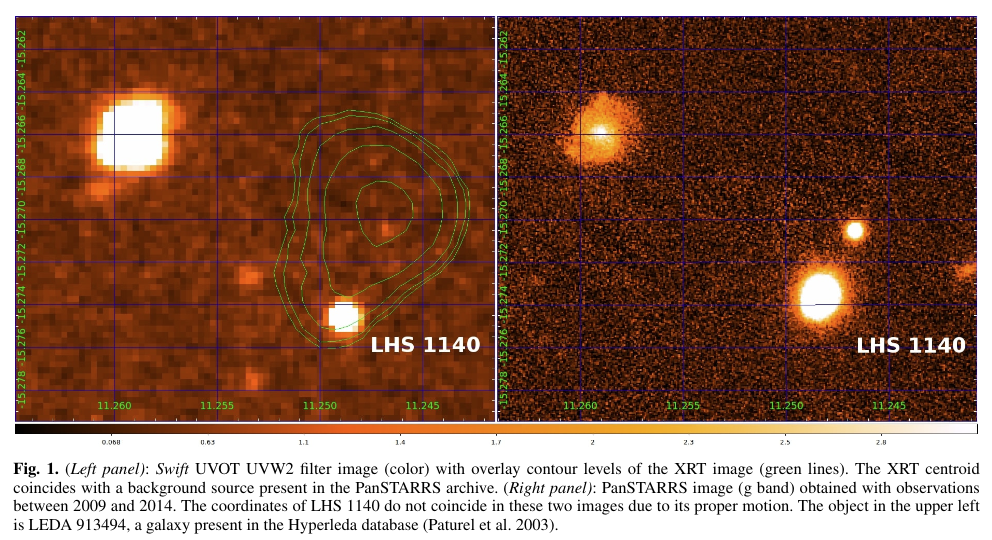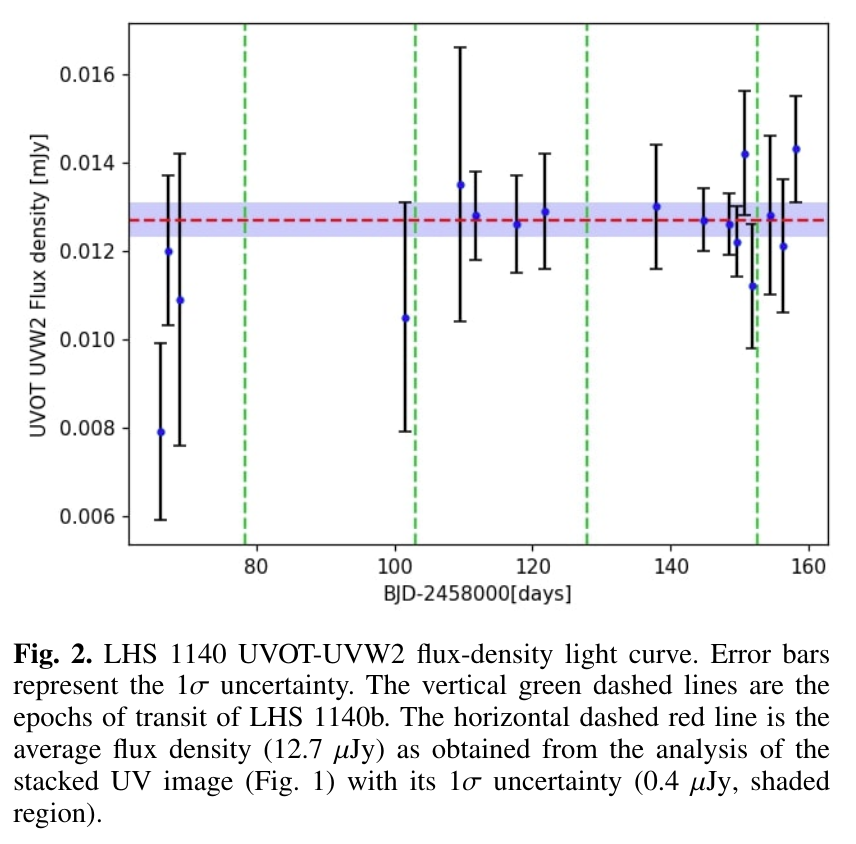The high-energy radiation environment of the habitable-zone super-Earth LHS 1140b
- 1Università dell'Insubria , Dipartimento di Scienza e Alta Tecnologia, Italy
- 2INAF, Osservatorio Astronomico di Brera, Merate, Italy
- 3INFN, Università Milano-Bicocca, Milano, Italy
- 4INAF, Fundación Galileo Galilei, Brena Baja, Spain
In the last few years many exoplanets in the habitable zone (HZ) of M-dwarfs have been discovered. The HZ is defined by the range of distances from a star in which a planet can maintain liquid water on its surface. M-dwarf stars (with effective temperatures between 2300 and 3800 K and masses <0.6 MSun ) are the most abundant stellar population in the Galaxy (~75 %) and currently the most promising targets to discover habitable worlds. Recent studies (e.g., France et al., 2013; Loyd et al., 2018) suggest that the X-ray/UV activity of M-dwarfs is very different from that of our Sun as a consequence of magnetic activity in their outer atmospheres responsible for strong X-ray/UV flares. Considering the closer distance of the HZ around M-dwarfs (~0.1 AU) compared to earlier spectral type (i.e. hotter) stars (~1 AU for our Sun), HZ exoplanets orbiting these stars may be subject to a variable and energetic environment. This has several implications for planetary habitability. For example, UV radiation can inhibit photosynthesis, induce DNA destruction, cause damage to various species of proteins and lipids (Buccino et al. 2007). On the other hand UV radiation is a fundamental ingredient for prebiotic photochemistry, especially for the synthesis of RNA, which favours the emergence of life (Ranjan et al. 2017).
I studied the X-ray/UV radiation environment of LHS 1140, one of the most interesting systems discovered up to now. The parent star, a M4.5 dwarf at ~15 pc from Earth, hosts LHS 1140b, a super-Earth-size planet in the HZ with an orbital period of ~24.7 days. Recently another planet has been discovered, LHS 1140c. Its orbital period is ~3.8 days. To characterize the X-ray/UV environment, I analyzed 38 ks of Swift data obtained within Cycle 14. Seventeen observations, distributed over three months, were performed providing simultaneous UV (uvw2 filter, 2000 Å) and X-ray (0.3-10 keV) data.
In order to study the relevance of the UV environment for habitability, abiogenesis and the atmospheric chemistry, two different UV bands have been considered: the far UV GALEX band (1344-1786 Å, FUVG) and the near UV GALEX band (1771-2831 , Å, NUVG). I measured the NUVG flux from the UVOT data and then estimated the FUVG flux, through a correlation between NUVG and FUVG that I obtained from a sample of low-mass stars in the GALEX public archive. With this sample, I could also compare the variability of the NUVG flux of LHS 1140 with the variability of other M-dwarfs (from M4 to M5 spectral type) implementing the estimate of the relative median deviation index MADrel (Miles & Shkolnik, 2017).
No significant variation of the NUVG flux of LHS 1140 is found over 3 months, and I did not observe any flare during the 38 ks on the target. LHS 1140 is in the 25th percentile of least variable M4-M5 dwarfs of the GALEX sample. Analyzing the UV flux experienced by the HZ planet LHS1140b, I found that outside the atmosphere it receives a NUV < 2% with respect to that of present-day Earth, while the FUVG flux is ~3 times higher. Thus, the FUVG /NUVG ratio reaching LHS 1140b is ~100-200 times greater than the ratio reaching Earth nowadays.
During my analysis I discovered a bright X-ray source at 11 arcsec from the present position of LHS 1140 (Fig. 1). Given the large proper motion of LHS 1140 (317.59 mas yr-1 in right ascension and -596.62 mas yr-1 in declination), it is very likely that archival estimates of LHS 1140 fluxes are contaminated by this source due to their positional coincidence. I characterized the spectrum of the contaminating X-ray source and could estimate, for the first time, the X-ray luminosity (0.1-3 keV) of LHS 1140 ~3x1026 erg s-1.
Through a visual inspection of the images available in literature I estimated a new spectral energy distribution (SED), excluding the images where LHS 1140 and the contaminant source were spatially coincident and using the optical and infrared images where the two sources are resolved. Thus, I estimated a new effective temperature for LHS 1140 of 3016 K, ~200 K lower than the previous estimates.


The high FUVG /NUVG ratio of LHS 1140 could lead to the formation of so-called "false-positive biosignatures" in the atmosphere of LHS 1140b, inducing for example the abiotic production of O2 through photolysis of CO2. False-positive biosignatures are elements previously considered tracers of life which, in particularly energetic environments, can instead be produced abiotically. This is a warning for future searches for biomarkers in the atmosphere of LHS 1140b. The low level of NUVG flux seen by LHS 1140 may not be enough to trigger the prebiotic pathways necessary for the synthesis of RNA (Ranjan et al. 2017) and thus could be negative for abiogenesis. In the context of a possible panspermia scenario (Lingam & Loeb 2017), I estimated the NUVG flux experienced by LHS 1140c, ~12 times higher with respect to that of LHS 1140b. This makes LHS 1140c, albeit outside the HZ, probably more suitable for the abiogenesis conditions.
In view of the many studies considering UV radiation as deleterious for life and of the UV luminosity of LHS 1140 that I measured with Swift observations, the relatively low level and stability of UV flux experienced by LHS 1140b should be favorable for its present-day habitability.
How to cite: Spinelli, R., Borsa, F., Ghirlanda, G., Ghisellini, G., Campana, S., Haardt, F., and Poretti, E.: The high-energy radiation environment of the habitable-zone super-Earth LHS 1140b, European Planetary Science Congress 2021, online, 13–24 Sep 2021, EPSC2021-641, https://doi.org/10.5194/epsc2021-641, 2021.

